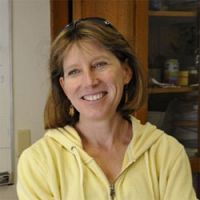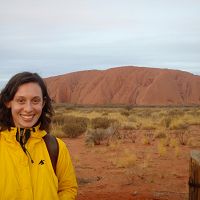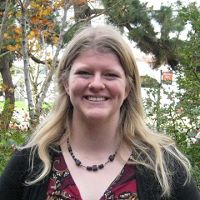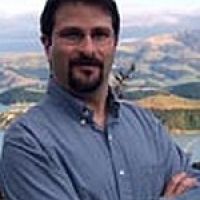ESA Annual Meeting 2016
The Ecological Society of America's Annual Meeting in Fort Lauderdale, Florida
Fort Lauderdale, Florida
-
Luquillo, INVESTIGATOR
-
National, ADVISORY BOARD
-
Catalina-Jemez, INVESTIGATOR
-
Calhoun, Sierra, COLLABORATOR
-
Calhoun, Catalina-Jemez, COLLABORATOR
-
IML, INVESTIGATOR
-
National, INVESTIGATOR, STAFF
The Ecological Society of America's Annual Meeting is taking place Sunday, August 7- Friday, August 12, 2016 in Fort Lauderdale, Florida. This year's theme is Novel Ecosystems in the Anthropocene.
With a rapidly changing climate, altered hydrological and nutrient cycles, dominance of large regions by agricultural and urban ecosystems, and massive movement of species to new continents, the Earth has entered a new epoch characterized by human influence. Understanding the basic principles of ecology will be more important than ever before, to predict how new combinations of species in new environments will develop into functioning, novel ecosystems.
Building on The Ecological Society of America’s 2015 Centennial meeting—Ecological Science at the Frontier—the 101st annual meeting will support sessions that explore how ecosystem structure and function respond to multiple drivers of change, how resource managers can cope with developing novel ecosystems, and potential benefits and problems that society will face as we progress into the Anthropocene Epoch.
Please see below for a list of sessions, talks or events related to CZ science.
Monday, August 8, 2016
Scientific Plenary: Peter M. Groffman
8am – 10am, Greater Ft. Lauderdale ♦ Broward County Convention Center, Floridian Ballroom AB
What role do microorganisms play in ecosystems, and what role do they play in nutrient cycling, water and air quality, and carbon storage in soils? Scientist Peter Groffman of the City University of New York will talk about environmental regulation and microbes. Groffman's research is funded by several NSF programs, including the Water Sustainability and Climate Program.
Tuesday, August 9, 2016
OOS 11-1 - Why restore biocrusts in dryland regions?
1:30 PM, 315, Ft Lauderdale Convention Center
Jayne Belnap, Southwest Biological Science Center, U.S. Geological Survey, Moab, UT
Background/Question/Methods
In dryland regions, where plants are sparse, the dominant cover is often biological soil crusts (biocrusts), a community of photosynthetic organisms (cyanobacteria, algae, lichens, and mosses), fungi, heterotrophic bacteria, and soil fauna. Because these communities cover most soil surfaces, they mediate almost all inputs and losses from dryland ecosystems. In addition, they fix atmospheric carbon and nitrogen, alter local to regional hydrologic cycles, stabilize soils, capture resources such as nutrient-rich dust and contribute to plant nutrition and growth. For these reasons, it is essential that their restoration be considered along with that of vascular plants. As the cover and species composition of biocrusts determines the degree to which they contribute to ecosystem processes, attention needs to be paid to this as well in restoration efforts.
Results/Conclusions
The Earth’s Critical Zone is defined as the “heterogeneous, near surface environment in which complex interactions involving rock, soil, water, air, and living organisms regulate the natural habitat and determine the availability of life-sustaining resources”. In most temperate and tropical ecosystems, tall plants and the large numbers of roots ramifying throughout deep soils result in a critical zone measured in many meters. Conversely, deserts have sparse short vegetation, soils that are shallow or non-existent, and large amounts of rock surfaces. Therefore, a different way of envisioning the critical zone in deserts is proposed: rather than encompassing meters of life above and below the soil and being defined mostly by where roots occur, the critical zone in deserts encompasses the top centimeter of rock or soil where biocrusts, not plant roots, dominate. Wherever possible, re-establishing the original species composition and cover of biocrusts to disturbed areas is important for restoring ecosystem health.
OOS 11-4 - Response of soil microbial activity to topography in a dryland watershed
315, Ft Lauderdale Convention Center
Rebecca Lybrand, Crop and Soil Science, Oregon State University, Corvallis, OR and Rachel E. Gallery, School of Natural Resources and the Environment, University of Arizona, Tucson, AZ
Background/Question/Methods
Microbes regulate carbon cycling in soil systems, in part by excreting extracellular enzymes that decompose organic matter into usable energy and nutrient sources. Studies of potential extracellular enzyme activity in water-limited environments are required to improve our understanding of soil decomposition and microbial nutrient demands in drylands, which cover approximately 40% of Earth’s land surface. Our research examined soil microbial response to topography in a dryland watershed by quantifying exoenzyme activity (EEA) across pairs of divergent, water-shedding and convergent, water-gathering landscape positions. We established nine divergent and nine convergent plots in a Sonoran Desert scrub environment that represents the lower climate end member of the Catalina Critical Zone Observatory with annual precipitation and temperature averages of 45 cm and 18°C, respectively. Surface mineral soils were collected from each plot and analyzed for soil pH, organic matter content, and biogeochemistry. We quantified potential EEA for seven enzymes using fluorescently labeled substrates and summed the respective enzyme activities to assess total carbon (C), nitrogen (N), and phosphorus (P) mineralization between divergent and convergent landscapes.
Results/Conclusions
Soil pH is slightly acidic to neutral across the plots and did not significantly differ between landscape positions. Total C, P, and N positively correlated with pH, albeit insignificantly. We observed significant differences in potential EEA between divergent and convergent positions, likely a result of moisture availability in complex terrain. We found that total C and P activity were significantly higher in convergent, water-gathering landscape positions compared to adjacent water-shedding plots. Interestingly, total N activity showed no significant difference between divergent and convergent landscapes. We attribute the increase in total C and P activity to a greater accumulation of water and soluble geochemical constituents in the convergent sites. We hypothesize that total N activity may reflect seasonal patterns in rainfall, single storm events, or contrasting responses based on the form of available N (NH4+, NO3-). Our findings demonstrate that landscape position exhibits significant control on potential exoenzyme activity and requires additional consideration when quantifying microbial activity in dryland systems. Future work will integrate bulk soil geochemistry, particle size distribution, and seasonal variation in potential exoenzyme activity to further examine the importance of landscape position on decomposition rates in pulse-driven ecosystems.
Wednesday, August 10, 2016
IGN 6-1 - NEON-CZO microbial ecology and biogeochemistry data integration and cross-site comparison
316, Ft Lauderdale Convention Center
Emma L. Aronson, Chelsea Carey, Aaron Packman, Nanxi Lu, Emilio Mayorga, Sarah M. Owens, Folker Meyer and Lee F. Stanish
The National Ecological Observatory Network and Critical Zone Observatory network are National Science Foundation efforts to understand ecosystems around the country. Together they are generating a massive amount of high quality soil microbial community and biogeochemistry data. We have formed a group to begin to integrate these two different data sources and data types, in order to compare the microbially-mediated biogeochemical functions of the diversity of ecosystems across the US. We anticipate using this vast dataset to delve deeper into the connections between soil microorganisms and biogeochemical cycling.
Thursday, August 11, 2016
Drought in the rainforest: Biogeochemical responses and feedbacks to climate change
2:10pm, Grand Floridian Ballroom G, Fort Lauderdale Convention Center
Whendee Silver, UC Berkeley
Climate models predict an increase in the frequency and severity of drought in Neotropical rainforests. These environmental conditions are new for humid tropical forests and are likely to lead to changes in biogeochemical cycling, affecting patterns in carbon storage and greenhouse gas emissions, researchers believe. Scientists will report on research on the effects of a severe drought in 2015 in Puerto Rico's Luquillo Experimental Forest, one of NSF's Critical Zone Observatories.
Credit: NSF Luquillo Critical Zone Observatory
Explore Further









